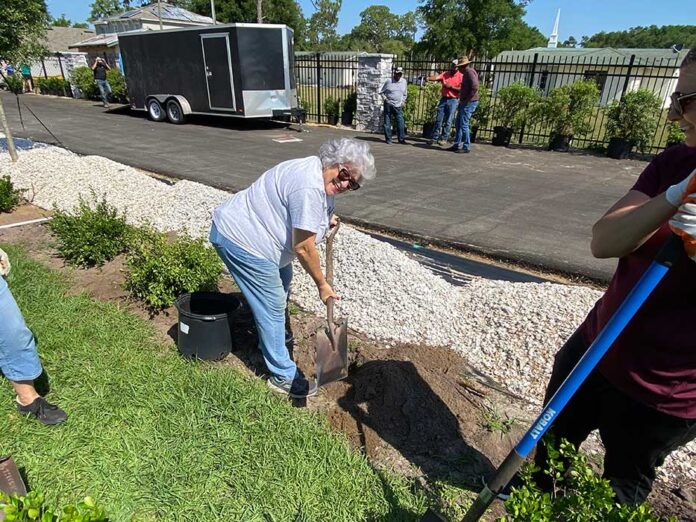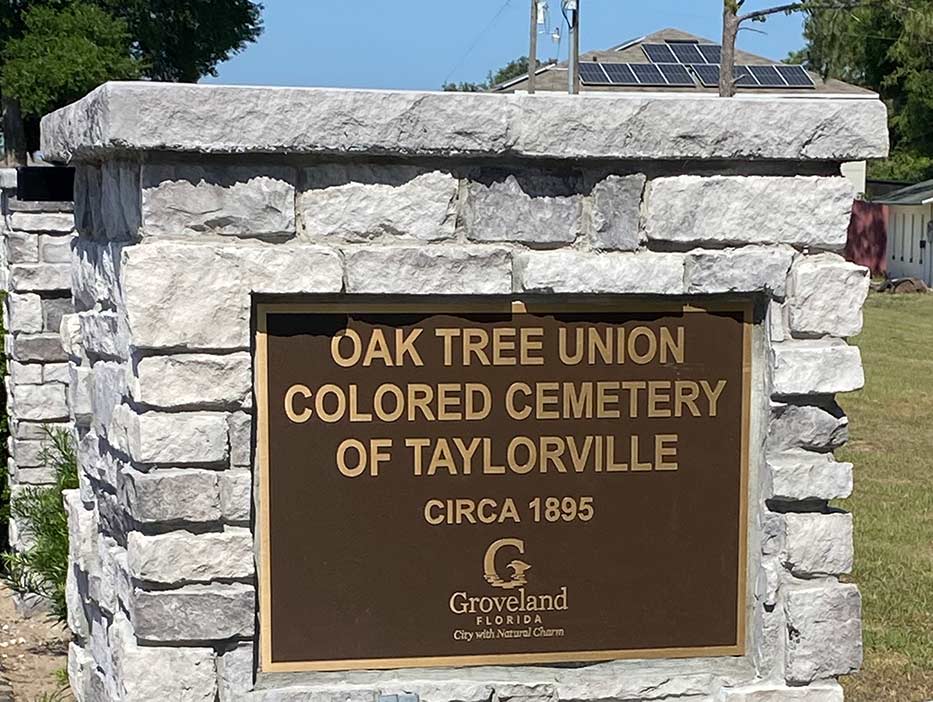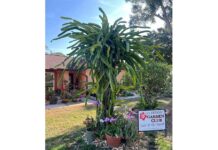by Chuck Seaver, South Lake Tablet
The City of Groveland recently hosted a beautification day at the Oak Tree Union Colored Cemetery of Taylorville. The cemetery, which has now been acquired by the City of Groveland, is located just north of the Brighton Subdivision on State Road 19 in Groveland.

The land had long been privately owned and for the most part, forgotten until Groveland Fire Chief Kevin Carroll began researching the historic grounds. Local natives of the area, including a few descendants of those laid to rest there recall having to sneak into the cemetery to visit loved ones.
Sam Griffin, the nephew of Samual Griffin, a WWI Veteran laid to rest at Oak Tree Union, recalls as a young man having to sneak onto the property to visit his uncle’s grave by climbing through heavy brush, thick trees, and barbed wire fence that surrounded the cemetery. The cemetery remained abandoned and ungroomed for nearly eight decades. Chief Carroll learned about the old cemetery while working on another unrelated project in the area. Carroll’s discovery quickly transformed into a passion project that would eventually lead to the discovery of 229 known burial sites on the premises.
In late May of 2022, the City of Groveland was awarded a $499,000.00 reimbursement grant from the State of Florida to restore the city’s old cemetery. Since then, Chief Carroll and other city employees, volunteers, archeology experts, and descendants have been hard at work to not only clear the area of brush and invasive trees but beautify it as well with sod, fresh landscaping, and a large attractive entryway made of stone.
 Headstones have been added to the graves that were located by the Florida Public Archeology Network. One such grave, that of Henry Spellman, a WWI Veteran, has been transformed from a grave with an algae-covered headstone that was nearly uprooted by a huge ear tree, to a site with a straight and freshly polished headstone. The diseased ear tree, which is considered invasive to Florida, was removed and cleared from the grounds.
Headstones have been added to the graves that were located by the Florida Public Archeology Network. One such grave, that of Henry Spellman, a WWI Veteran, has been transformed from a grave with an algae-covered headstone that was nearly uprooted by a huge ear tree, to a site with a straight and freshly polished headstone. The diseased ear tree, which is considered invasive to Florida, was removed and cleared from the grounds.
In July of 2022, the oak tree that is believed to be the name’s sake of the historical cemetery was discovered by work crews. “The tree was covered by vines, and it was almost as if it had been petrified with time,” said Carroll. The tree has been removed for safety’s sake, but a lot of the wood has been preserved and will be re-purposed on the grounds of the cemetery. Local lore reveals that the large oak became a landmark by which passers-by could identify the location after it became landlocked by private property owners.
Chief Carroll pointed out another solemn discovery because it holds many more mysteries than it does facts. The area of the cemetery that contains what are believed to be children in unmarked graves occupies a large single corner of the grounds. Local records are sketchy but with the help of Nigel Rudolph, an archeology expert and ground sonar specialist, the graves were measured and platted. “We are confident that the sites are those of children due to the consistent small sizes of the graves. Why they were all buried in this one location is a question that we may never have answers to,” says Rudolph.
The corner has been affectionately named Macie’s Corner in honor of the single headstone found in the corner where the children are located. The Headstone reads “Macie, daughter of James & Fluta Blain. Born May 26, 1909, Died December 21, 1909, We Will Meet Again.” The headstone was found in pieces but has since been professionally repaired and restored. A memorial wall has been erected in Macie’s Corner and remains to be a work-in-progress, according to Chief Carroll. “We want to bring as much respect and remembrance as we can to these children who have been lost in history,” says Carroll.
The hard work that has taken place at Oak Tree is pleasing to the eye, but to the few remaining descendants and generational friends who are still here to behold the restoration as it unfolds, it is not only beautiful but restores a piece of community history that might have otherwise been lost in time.
According to Linda Charlton, a South Lake Tablet contributor and local historian, Groveland was Taylorville before it became Groveland. The earliest written record of any black church in the area was of Oak Tree Union Colored Church of Taylorville. The “Union” indicates that Baptists and Methodists worshipped together. The “Oak Tree” portion of the title signifies the giant oak tree that was once the landmark by which the community members could tell where the cemetery was located.
Chief Carroll remains active in seeking information from descendants, generational friends, or others who may have knowledge, documents, pictures, or any other helpful information regarding the Oak Tree Cemetery. Chief Carroll can be reached by email at Kevin.Carroll@Groveland-fl.gov or by phone at 352-429-1209.











